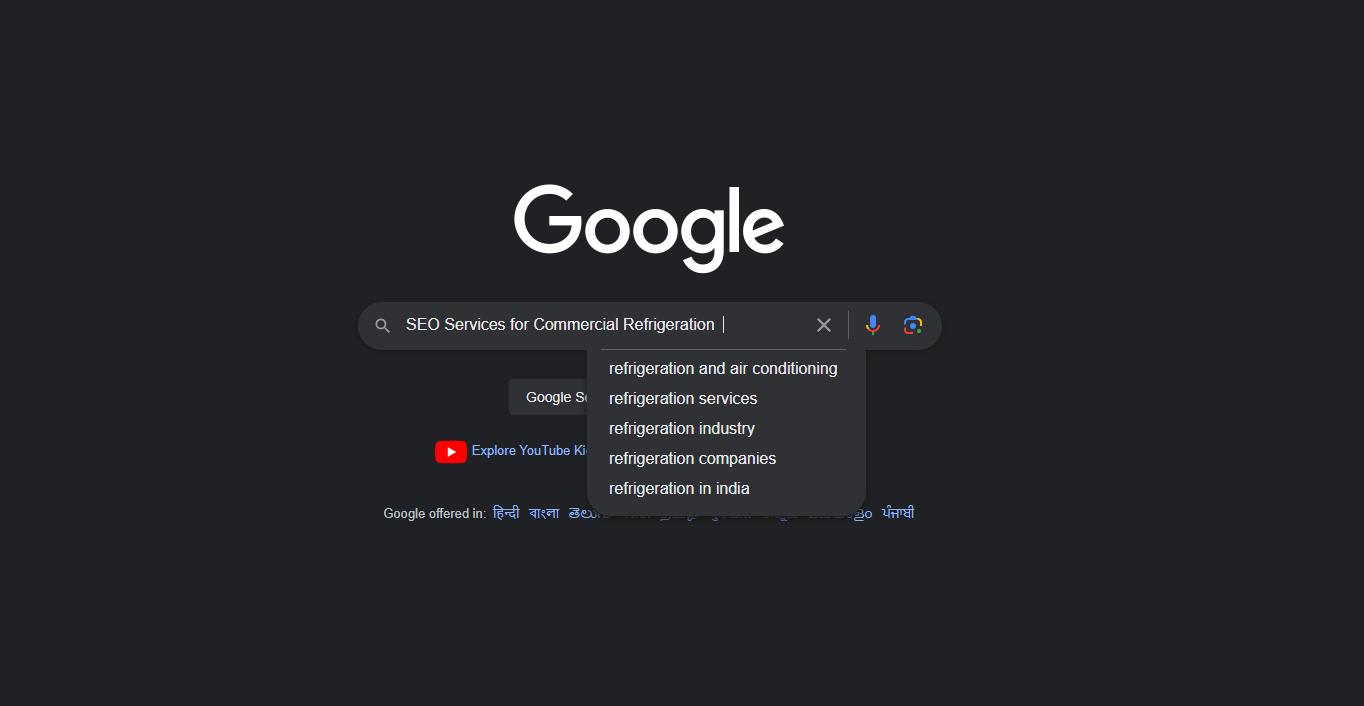These days, diners aren’t just walking down the street and checking menus taped to windows. They are using highly specific, complex queries like asking an AI for “a romantic, mid-range rooftop restaurant in Delhi with a great wine list,” or searching for “best late-night vegan tacos near me.” People now rely on Google, Maps, voice search, and sophisticated AI-powered tools to decide where to eat.
That means your restaurant’s online visibility matters just as much as your food and service. When you show up at the top of local search—complete with mouth-watering photos, glowing reviews, and easy booking options—you’re the one filling tables. When you don’t, your competitors will.
Let’s dive into five proven restaurant SEO strategies for 2025 and beyond—practical, high-impact steps to help you rank higher on Google and AI search, attract more diners, and stay booked all year long.
Why Restaurants Must Invest in Next-Gen SEO in 2025 and Beyond
The way people discover restaurants has completely changed. Whether someone’s craving vegan brunch, gluten-free pizza, or a late-night dessert, they start online. They’re not just searching for where to go—they’re comparing everything in one glance:
- Menus and Pricing: Instant access and comparison.
- Ratings and Reviews: Determining trust and quality.
- Photos and Location: Checking ambiance and proximity.
- Opening Hours and Availability: Booking on the fly.
If your restaurant isn’t visible in these critical searches, you’re not even in the running. SEO is the modern version of word-of-mouth—only faster, wider, and measurable. It builds your brand’s trust, reputation, and local authority, helping you stand out in crowded markets. In short, a strong SEO presence means full tables and steady orders, both online and offline.
1. Optimize for Local SEO & Google Maps Dominance
When someone types “best Italian restaurant in Toronto” or “top breakfast spot near me,” Google Maps decides which businesses appear first. If your restaurant isn’t showing up there, you’re missing the highest-intent customers—the ones ready to eat now.
To dominate local SEO:
- Master your Google Business Profile (GBP/GMB): This is your single most important digital asset.
- Include accurate business info, select all relevant categories (e.g., Italian Restaurant, Pizza Place, Fine Dining), and use Geo-Targeted Keywords naturally in your “Description” (e.g., Best Sushi in Downtown Toronto).
- Post updates weekly about new menu items, events, or offers.
- Commit to a 100% Review Response Rate (in 24-48 hours).
- Address critiques professionally, and crucially, use keywords naturally in positive responses (e.g., “We’re glad you enjoyed our gluten-free pizza and romantic ambiance!”).
- Add comprehensive links for reservations, ordering, and delivery platforms (clearly marked).
- Upload high-quality, professional photos of dishes, interiors, and your team constantly.
Local SEO is your modern-day street visibility—except instead of foot traffic, it’s high-value search traffic. Nail it, and you’ll show up exactly where hungry people are looking.
2. Build a Fast, High-Converting Restaurant Website
Your website is your restaurant’s digital front door—and first impressions matter more than ever. A slow site or confusing menu is an instant turn-off.
A top-performing restaurant website must be:
- Blazing Fast: Load in under 2 seconds (use tools like Google PageSpeed Insights).
- Mobile-First: Over 70% of restaurant searches happen on smartphones.
- Conversion-Optimized: Include easy booking or ordering buttons on every page.
From an advanced SEO standpoint:
- Implement Advanced Schema Markup. Specifically use
Restaurant,Menu,Review, andOpeningHoursSpecificationschema. This is crucial for AI and Google to accurately read your structured data and generate Rich Snippets. - Use optimized title tags that combine your offering and location (e.g., Best Steakhouse in Chicago | [Restaurant Name]).
- Ensure all images are compressed and include relevant ALT text for accessibility and search engines.
A fast, user-friendly website tells both Google and your guests that you care about quality. It builds trust—and trust leads to bookings.
3. Create Helpful, AI-Friendly Content That Attracts Diners
In 2025 and beyond, ranking in search isn’t just about keywords—it’s about Authority and Helpfulness.
AI-driven platforms like Google SGE (Search Generative Experience) and Large Language Models (LLMs) no longer just read keywords—they summarize and cite Authority. They will recommend restaurants that answer long-tail, complex questions with high-value content.
Focus on answering Complex, Multi-Step Diner Journeys (Content Clustering):
- Simple Query: “Where to find the best vegan brunch in Oakville?”
- Authoritative Content: “10 Local Ingredients We Use to Make the Best Vegan Brunch in Oakville” (Signals Expertise).
- Simple Query: “How to pair wine with Italian food?”
- Helpful Content: “The Ultimate Guide: 5 Italian Dishes and the Perfect Wine Pairings for Each” (Signals Value).
Blog posts, local guides, ingredient stories, or chef interviews—all of these signal expertise and authenticity. When your content actually helps people decide where to eat, both search engines and AI assistants reward you with higher visibility.
4. Use Reviews to Build Credibility and Boost Rankings
Your reviews aren’t just feedback—they’re powerful SEO fuel and AI trust signals.
Google uses review quality, quantity, and recency to decide who ranks first in Maps and local search. Diners use them to decide who’s worth visiting.
Here’s how to make reviews work for you:
- Deploy a Multi-Channel Review Strategy: Ask via QR codes (linked directly to your GBP), follow-up emails post-booking, or SMS. Make the process frictionless.
- Encourage Specificity: Ask diners to mention specific dishes or experiences in their feedback (e.g., “Tell us what you thought of the Truffle Risotto!”). This creates long-tail keyword associations for your business.
- Handle Criticism Gracefully: A calm, public response to a negative review can build more credibility than ignoring it. It shows the future customer that you value service recovery.
5. Leverage Social Proof and User-Generated Content
In today’s world, what people post about your restaurant online is as valuable as any paid ad. When diners share photos, tag your restaurant, or post TikToks about their experience, they’re generating social proof. Search engines and AI tools see that as massive credibility and popularity.
Here’s how to use it strategically:
- Repost and Tag: Repost customer photos on your website, Google Business Profile, and Instagram. Always tag the original user (builds loyalty and encourages more sharing).
- Collaborate Locally: Partner with local food bloggers and micro-influencers whose followers are geographically relevant to you.
- Embed Social Feeds: Embed your Instagram or TikTok feed on your homepage. This constantly pulls fresh, high-trust content onto your main website, providing Google with new indexing material.
- Encourage Branded Hashtags: Create a short, catchy, branded hashtag and place it on menus and receipts.
The more people organically engage with your restaurant online, the stronger your overall SEO and local search signals become. In short: social buzz = better visibility.
Restaurant SEO in 2025 and Beyond: The Big Picture
Modern restaurant SEO isn’t just about getting found—it’s about building connection and trust. You need to show up where diners are searching, answer their questions before they ask, and make it effortless for them to choose you over anyone else.
To win in the AI-driven search landscape of 2025 and beyond:
- Dominate Local Search & Google Maps.
- Build a Blazing-Fast, Conversion-Optimized Website.
- Create Authoritative Content that ranks in AI-driven search.
- Manage and strategically respond to every review.
- Harness social proof and user-generated content.
Restaurants that start focusing on these next-gen SEO tactics today will dominate tomorrow’s search landscape. Because when you’re easy to find online, you’re easier to visit offline—and that means more tables filled, more reviews earned, and more revenue rolling in.
Ready to Maximize Your Bookings?
While these strategies are highly effective, implementing them consistently across all platforms—from optimizing your GBP to integrating advanced schema and managing AI content—requires specialized expertise and constant monitoring. Partnering with a dedicated restaurant marketing company ensures you stay ahead of Google’s frequent updates and win against local competitors without diverting focus from your kitchen and dining room. We specialize in local and AI SEO, providing the strategic support needed to guarantee full tables year-round. The sooner you start, the faster you’ll rank—and the fuller your restaurant will stay.


